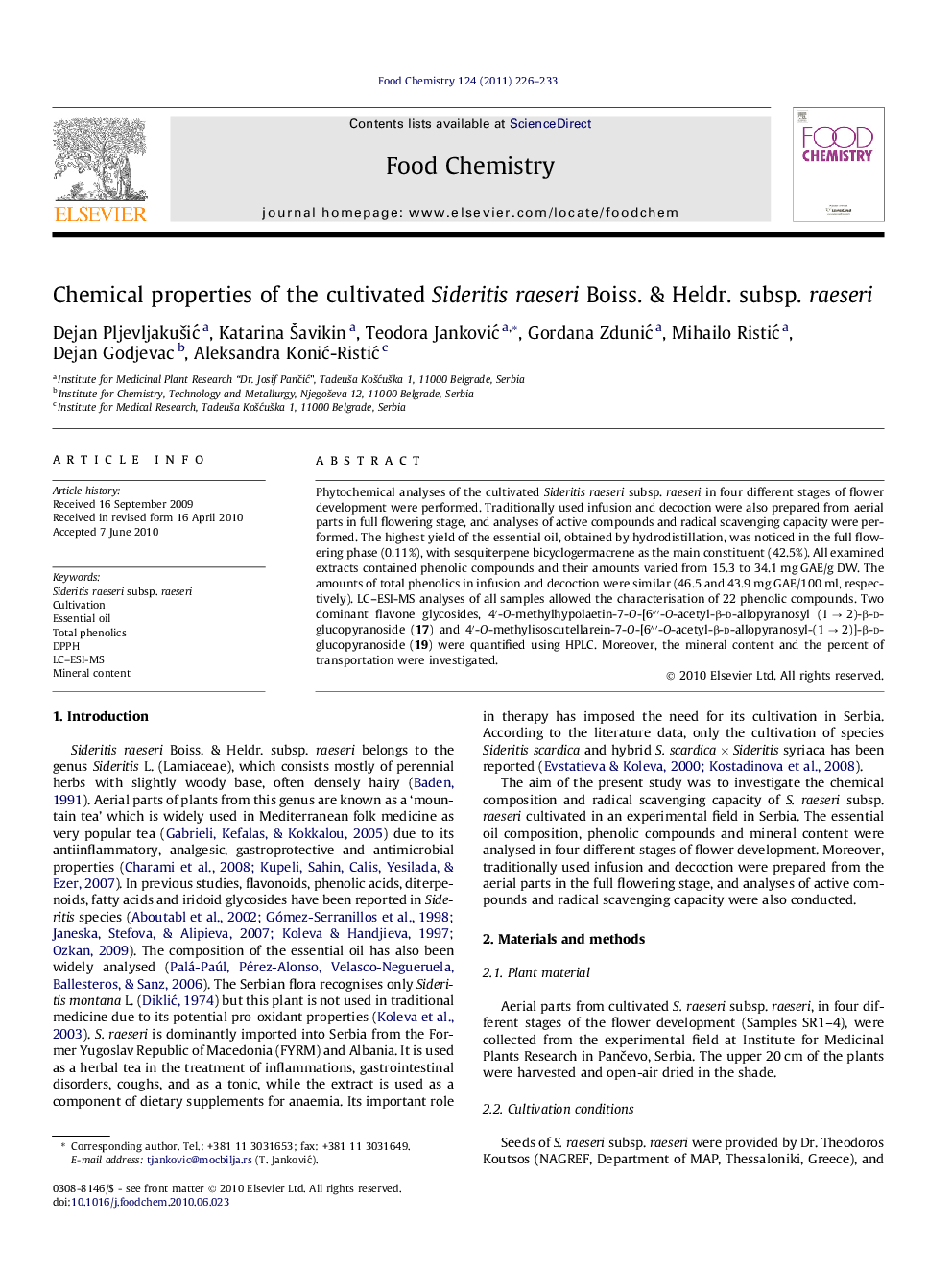| Article ID | Journal | Published Year | Pages | File Type |
|---|---|---|---|---|
| 1187650 | Food Chemistry | 2011 | 8 Pages |
Phytochemical analyses of the cultivated Sideritis raeseri subsp. raeseri in four different stages of flower development were performed. Traditionally used infusion and decoction were also prepared from aerial parts in full flowering stage, and analyses of active compounds and radical scavenging capacity were performed. The highest yield of the essential oil, obtained by hydrodistillation, was noticed in the full flowering phase (0.11%), with sesquiterpene bicyclogermacrene as the main constituent (42.5%). All examined extracts contained phenolic compounds and their amounts varied from 15.3 to 34.1 mg GAE/g DW. The amounts of total phenolics in infusion and decoction were similar (46.5 and 43.9 mg GAE/100 ml, respectively). LC–ESI-MS analyses of all samples allowed the characterisation of 22 phenolic compounds. Two dominant flavone glycosides, 4′-O-methylhypolaetin-7-O-[6‴-O-acetyl-β-d-allopyranosyl (1 → 2)-β-d-glucopyranoside (17) and 4′-O-methylisoscutellarein-7-O-[6‴-O-acetyl-β-d-allopyranosyl-(1 → 2)]-β-d-glucopyranoside (19) were quantified using HPLC. Moreover, the mineral content and the percent of transportation were investigated.
